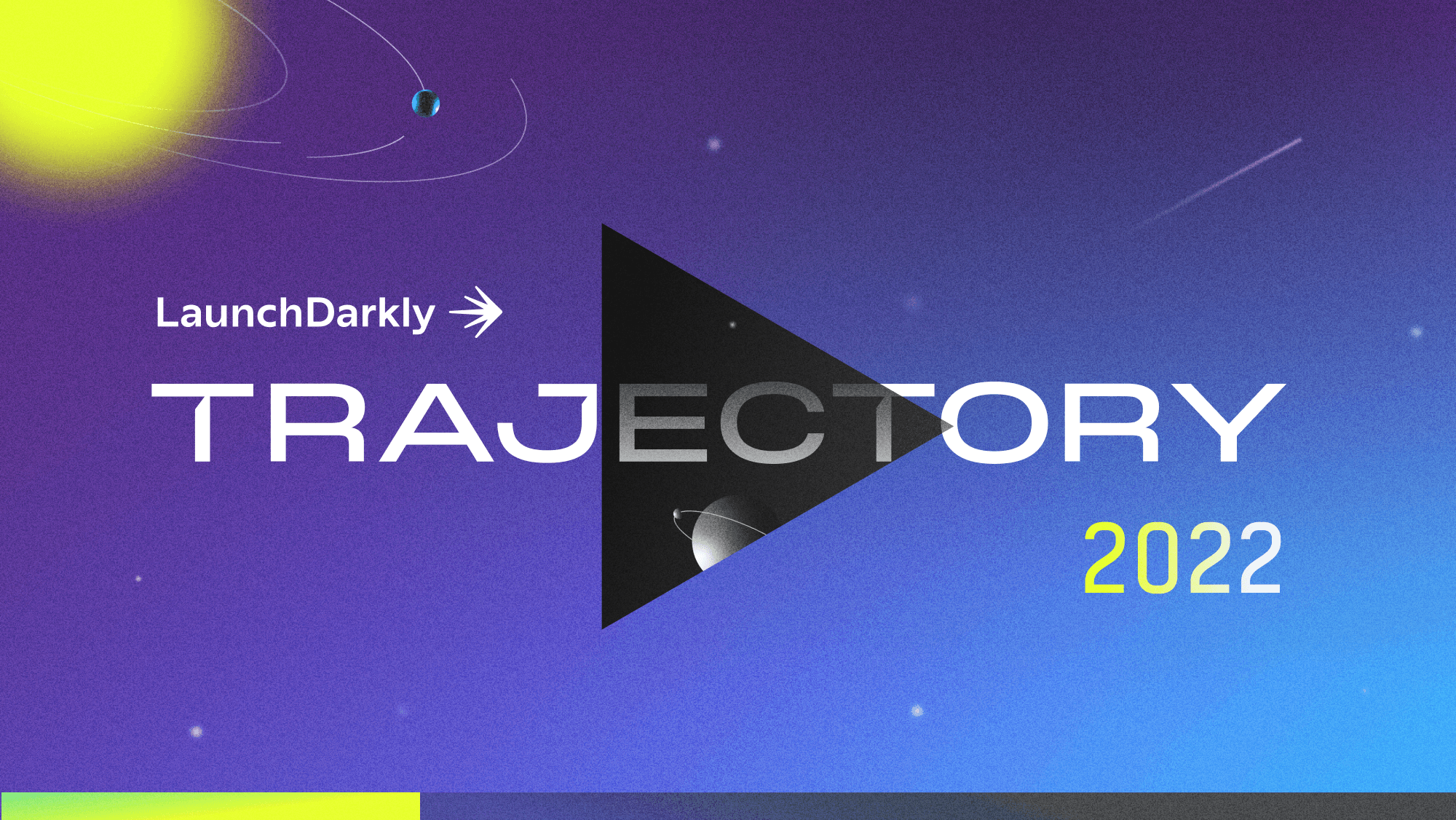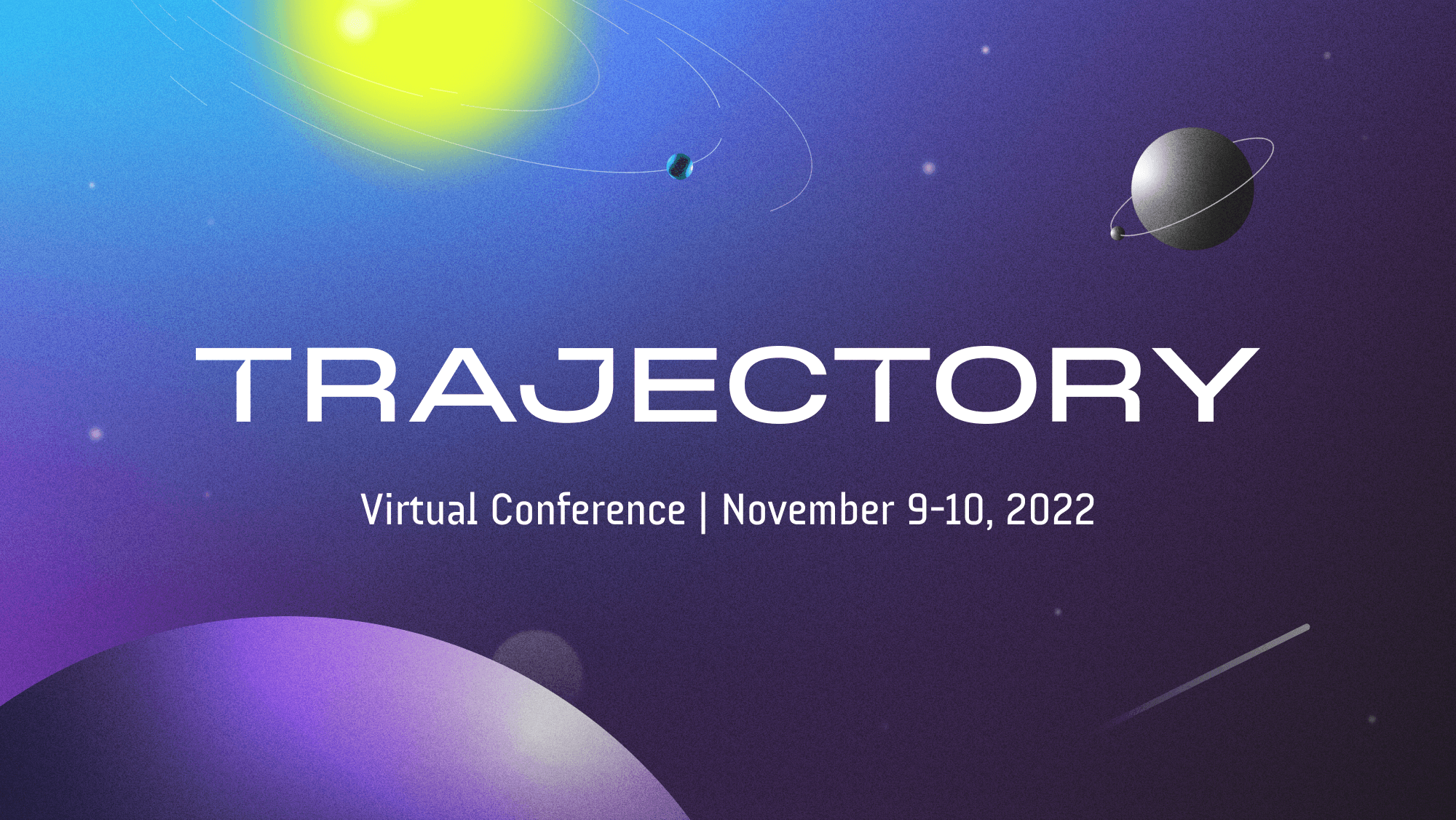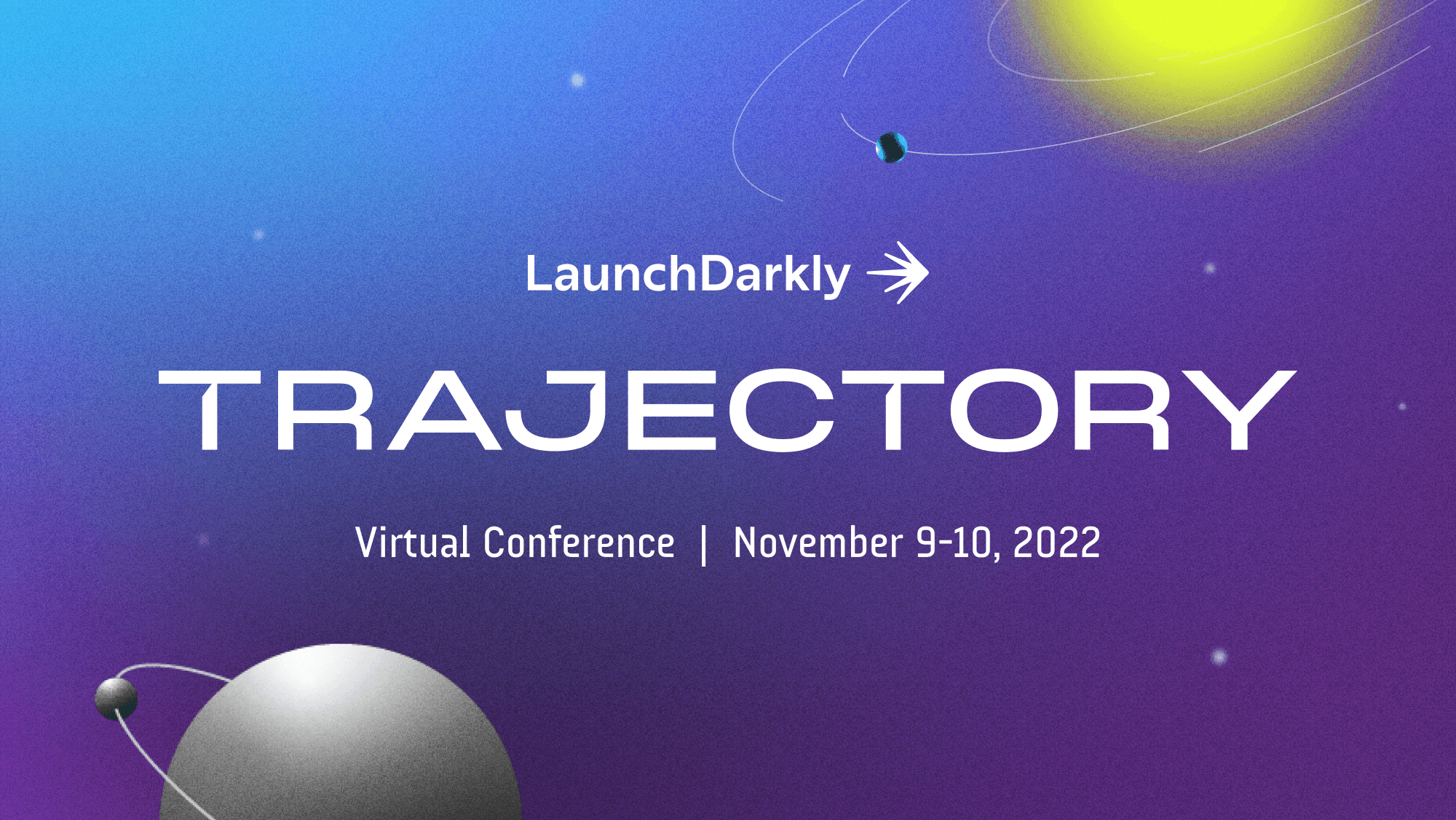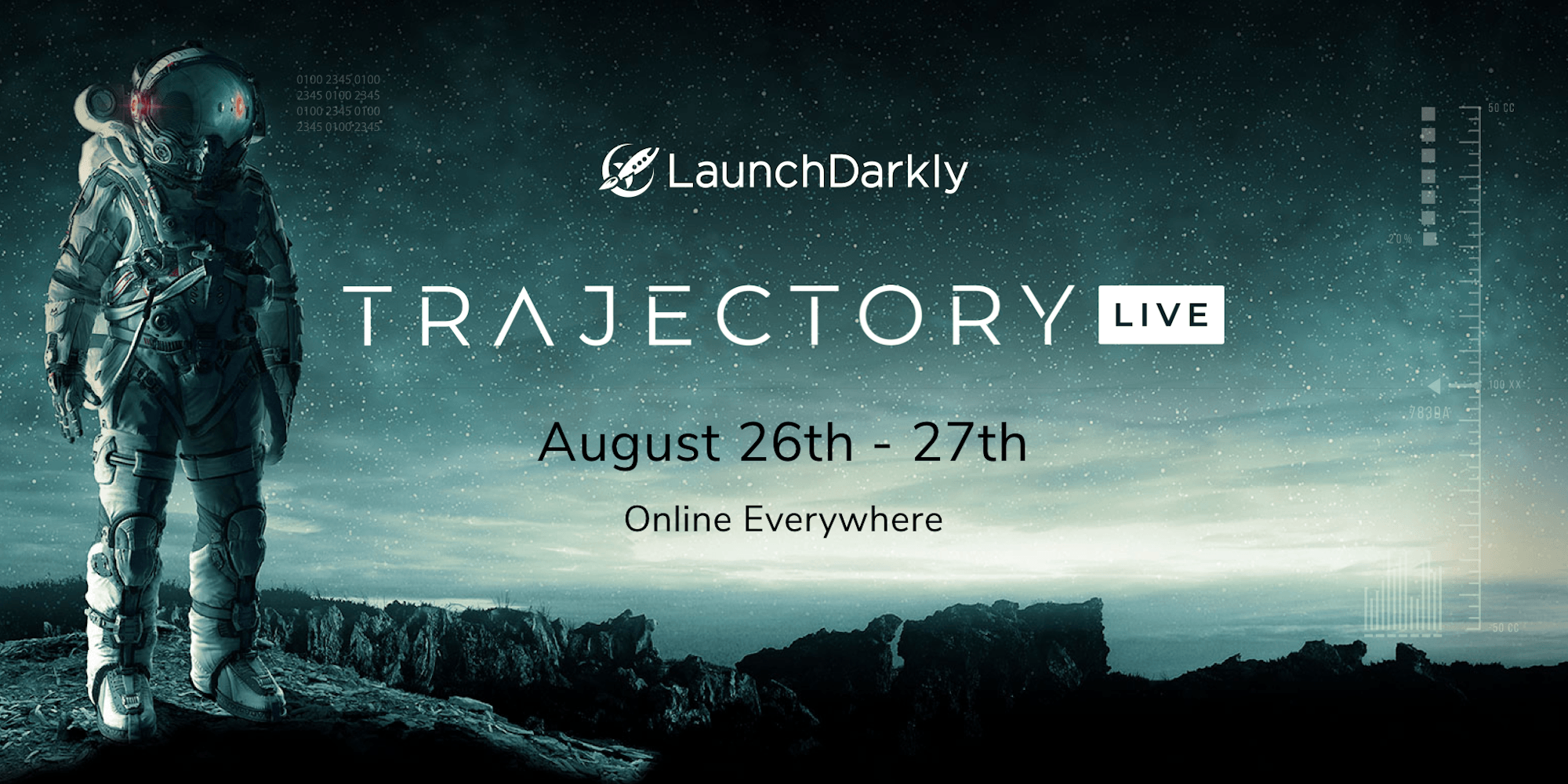We're one day in, with one day to go. So far, we've talked about sociology, velocity, strategy and architecture—and that's only for starters.
This year's Trajectory has gotten off to a fantastic start with the opening keynote from our CEO, Edith Harbaugh, to kick-off the proceedings and set the tone. Following on from Edith's opening remarks, we've heard from an array of enlightening speakers sharing their insights on iterating at pace. We've delved into development strategies, architectural approaches, and dynamic configuration. But what's more, this year's event has granted us the opportunity to take a step back to analyze why we make the decisions we do and how to design for empathy and build a sense of psychological safety.
Let's take a look at some of today's intellectually-stimulating talks from the full roster of sessions held in our third annual Trajectory conference:
Project to Product: Measuring Digital Outcomes with the Flow Framework®
A decade of software engineering and one million lines of open-source code have left Mik Kersten with some profound insights on the mapping of digital value streams. His work as founder and CEO of Tasktop, along with the research undertaken in preparation for writing "Project to Product"—his critically acclaimed book on measuring outcomes—have shown him the true impact of bottlenecks in organizations. He notes that most companies genuinely don't understand where the bottlenecks in their businesses are.
Without consciously understanding how information flows throughout your business, experimentation becomes a pipe dream. Understanding the relationship an organization has between its technical debt and feature flow can become instrumental in unearthing its potential for greatness.
In his talk, Mik notes that your' flow metrics' are much like the vital signs emitted from the human body. They allude to our health, potential issues and long-term performance. Connecting your flow metrics to your business outcomes is the best way to maximize efficiency and iterate your way to a better product. By unearthing your dependencies through the use of flow metrics, you can meaningfully understand the investment you stand to gain from chipping away at technical debt.
Going from Zero to 100 Deploys a Day
If there's one thing that working in software engineering teaches you, there are many ways that you can get stuck. CEO and Co-founder of Sleuth, Dylan Etkin, has guided teams through many pitfalls where defining the blast radius of a problem became a challenge.
In his talk, he decodes the process of getting your team to deploy once per week to model your organization after the elite performers that make up more than a quarter of the respondents to this year's DORA report.
Metrics can make or break a team. It's easy for too much data to become overwhelming and entrench your decisions in too much, though. Dylan asserts that teams should automate their measurements and apply them everywhere as a method of standardization.
Building out standardized team performance measurements, over and above individual success metrics, is an excellent way of encouraging a blameless culture. This, in turn, empowers your development team to speak up when they feel strongly.
Automation can go a long way—especially when it comes to testing and streamlining your CI/CD pipelines, but particularly when it comes to observability. His pragmatic, actionable advice serves as an excellent blueprint for using visibility, communication and pure process to supercharge your team's development processes and ultimately boost overall outcomes.
Flag & Test Driven Development
We've all heard of Test-Driven Development (or TDD for short), and of course, feature flagging. However, in his talk, VP of Platform Engineering at Uniphore, Francesco Crippa, discusses how to effectively combine techniques from both disciplines to produce seriously high throughput levels.
Stepping back to explore the human fascination with purpose and satisfaction, Francesco outlines the conditions necessary to achieve a sense of “flow.” Losing yourself in the evolution of a task, otherwise known as flow, is only achieved when your goals are clearly defined, feedback is immediate, and the challenge and skill level is balanced. In essence, you mustn't find the task at hand too easy or too taxing to reach a state of flow.
Test-driven development follows these principles of flow due to its inherent feedback loop basis; you write a test, it fails, then you write the code for it to pass, refactor the parsing code, and the cycle repeats. He adds that you can use feature flags to achieve a similar development cycle through trunk-based development practices.
Indeed, hiding your code behind a feature flag awards the added benefit of enabling it to sit in your main branch without necessarily being executed. Perpetually pushing to main as a, well, a mainstay of your development lifecycle, aided of course by flags, creates an instantaneous feedback loop. You're able to work on hot fixes with the latest information and iteration with the added benefit of rolling back in production if you encounter an unexpected issue.
Francesco's method of developing behind a feature flag for a feature that doesn't yet exist, then harnessing the fundamentals of TDD to create the underlying code, allows his team to cut down their feedback loops to under half an hour. Progress becomes meaningful, and releases gain impact. And, what's more, achieving flow not just as an individual but also as a collective team becomes a reality.
Flipr: Uber's Dynamic Configuration Platform
Servicing both the volume and velocity changes that Uber Technologies’ suite of applications require is by no means an easy task. Staff software engineer, Andy Maule, recognized this challenge and determined that the solution needed to decouple the updating configuration values from deployment to support the scale at hand. In his talk, Andy delves into Flipr, Uber’s tool for dynamic configuration management of Go, Python, Java, and Node clients.
On the surface, Flipr makes it possible for Uber's engineering team to write rule-based configuration, which enables its users to experience its services on a truly global level—for example, switching cities and capabilities based on a set of rule-based queries.
Yet, delving deeper into Flipr's capabilities, Andy shares how the international scale-up uses the tool to enable kill switches, incremental roll-out, access control lists and, of course, feature flagging.
Empowering close to a million changes per month across more than 800 services, this flagging system has very much become a foundational component within the business. From influencing its overarching product strategy by powering experimentation, to serving as a day-to-day linchpin powering functionality, Flipr helps Uber accelerate.
Building the Circle of Faith: How Corporate Culture Builds Trust
Information, as Dr. Ron Westrum notes, is the lifeblood of an organization. Its flow underscores its ability and overall capacity for success. The Professor of Sociology asserts how Google's Aristotle study validated the importance of psychological safety as a critical factor in guaranteeing the free flow of vital information and reflecting on what a business's information flow indicates about its leadership.
Most high-performing organizations are governed by mission-driven generative leaders, working to champion teamwork and trust as essential ingredients that lead towards success. In companies such as these, information is a two-way stream, meaning that learning is highly valued and encouraged. This sense of trust manifests itself not only in the conduct of its teams and organizational culture but often in the relationships that an organization fosters with its customers.
Drawing similarities between the world of software and aviation, the discussion reflects on how many ex-military airline captains took a very ‘my way or the highway” approach to management, discouraging the act of speaking up or voicing one's concerns. This lack of information flow, in which co-pilots were told to “shut up”, had very real consequences that, at their very worst, led to accidents culminating in the loss of lives.
Dr Westrum introduces the concept of the "circle of faith," a virtual social contract created by repeated successes, enabling the organization to do complicated tasks, and even on the odd occasion, "impossible" ones.
A circle of faith serves as a vital guarantee of safety since the ability to identify latent pathogens depends on information flow. Psychological safety isn't just a luxury, but in many cases, a life-saving measure that can help us to not only achieve great heights but avoid fatal pitfalls.
The above is just a taster from all the excellent sessions we've packed into the first day. Fear not if you missed anything mentioned in our recap or even the brilliant session delivered by Honeycomb's very own Liz Fong-Jones and Paul Osman on what to do when you blow your service level objectives! You'll soon be able to catch all of today's sessions on-demand—watch this space.
If you've not yet registered, rest assured, there's still time for you to catch the likes of Gene Kim, Rachel Stevens, and Nicholas Goss discussing the transformation of DevOps and those at the forefront of its redefinition.
Head here to sign up and tune in today from 8 a.m. PDT to hear from our industry's best and brightest. We'll be rounding off the final day of Trajectory with our two workshop sessions, Space Camp and AWS Modernization with CircleCI. Make sure not to miss out.


.png)







.png)


.png)